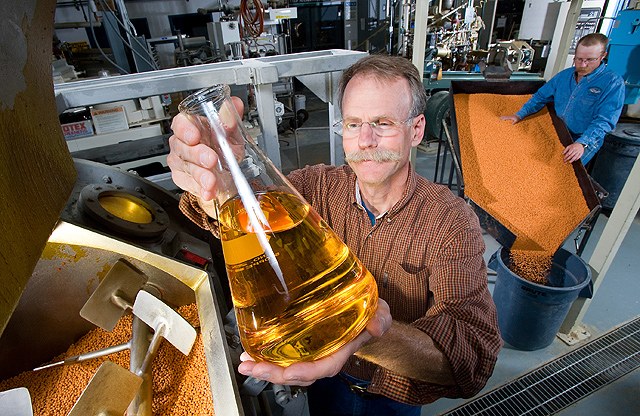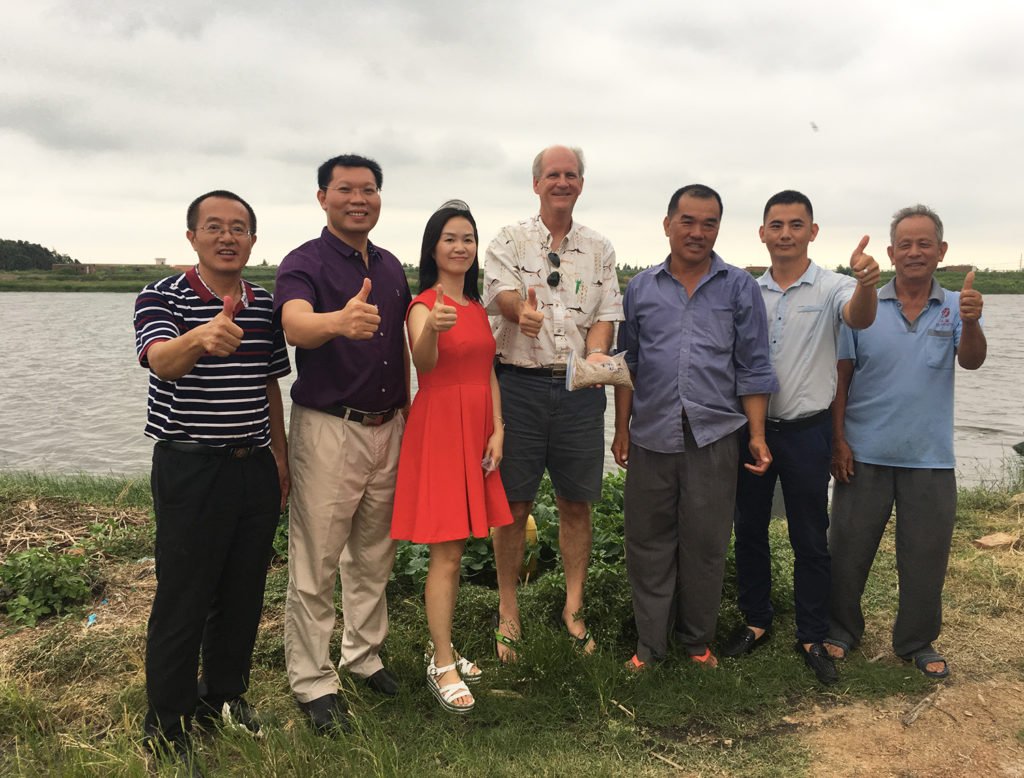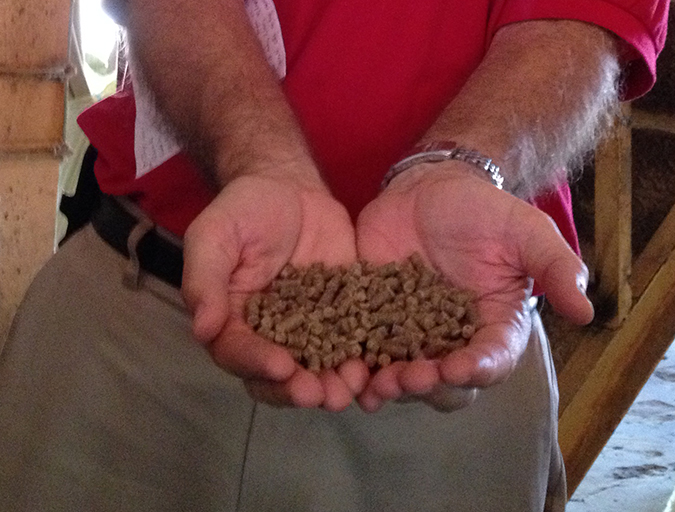The first X Prize for aquaculture is an innovation driver for aqua feeds

Why am I a judge for the F3 challenge? Because it is the first X Prize for aquaculture. Plain and simple. But before I begin, most readers will need a bit of backstory.
There is currently a $100,000 prize to document the milling and sale of 100,000 metric tons (MT) of aquaculture feed that does not contain fish, shrimp, squid or krill, and I, along with Dr. Kevin Fitzsimmons of the University of Arizona and Corey Peet of the Monterey Bay Aquarium, were asked to be judges. Actually, this challenge was the idea of Dr. Fitzsimmons, a tilapia specialist and aquaculture guru. When he called, asking if I wanted to be involved in judging an X-prize for aquaculture, I could not turn him down. Given his significant involvement in the development of aquaculture globally, you listen to his ideas.
And it turns out that Fitzsimmons also had the ear of an investor (a private entity not representing an industry sector or multinational company) whom he was able to convince his idea was sound. His idea was to create a monetary prize to reward a feed producer to document the creation and sale of 100,000 MT of fish feed containing no fishmeal or fish oil, and hence the HeroX F3 competition was born.
During my first call with Fitzsimmons, and honestly since then, my mind swirls with two opposing views. The first is that this is a great prize that can help spur on innovation in the aquaculture feed sector, and also fuel interest and excitement in this realm. The other side of my brain is more skeptical, and is thinking that with all the carp and tilapia being produced globally, 100,000 MT of vegetable based fish feed should be easy to produce. According to the FAO, the top 3 species produced in 2013 were grass (Ctenopharyngodon idellus), silver (Hypophthalmichthys molitrix), and common (Cyprinus carpio) carp. The fourth species was a clam with tilapia (Oreochromis niloticus) being the fifth-most produced species. Based on this, $100,000 should be an easy win for some company. So will this prize be a driver of innovation, or will it be a disappointment for the funder in that we will simply reward a company that is already meeting this goal?
A first question to ask is Can this competition be a driver of innovation? We must clarify what and where innovation is needed. Do we need alternative proteins besides fishmeal? There are many options from which we can already select, from single-cell proteins, to insect meal, to the ubiquitous soy. So I would argue we don’t need innovation in coming up with new proteins.
We know very well from tilapia that minor inclusion of fishmeal to a feed can decrease the FCR. So there is innovation that needs to occur to either demonstrate the cost effectiveness of these feeds to farmers, or to improve the feeds so they perform equally to conventional fish-based feeds.
Getting these proteins into feed at commercially viable quantities is another story. Dr. Rick Barrows of the Bozeman research station (featured in this Yale 360 story on plant-based aquaculture foods) admitted that even with two decades of research on feeds, he would fall short of the 100,000-MT goal. To this end, I would suggest that any company producing even 1 metric ton should consider entering, since a prize must be given at the end. If this challenge is truly aspirational and a winner is guaranteed, then the award will go to the contestant that produces the greatest amount toward the goal of 100,000 MT.
Given these alternatives, then for this task, I will broaden the idea of innovation to include not only creating feed, but increasing their acceptability by both farmers and the consumer alike. Through this competition, I have heard of fish-free feeds being available, but farmers not selecting to use them because of the idea that they underperform compared to feeds made with fishmeal. We know very well from tilapia that minor inclusion of fishmeal to a feed can decrease the FCR. So there is innovation that needs to occur to either demonstrate the cost effectiveness of these feeds to farmers, or to improve the feeds so they perform equally to conventional fish-based feeds. As far as consumers, their willingness to accept alternative feeds needs to be improved. Research by PROteINSECT suggests that consumers overall would be comfortable with insect meal feed, although there can be huge discrepancies between what consumers say they would do, and their actions in the marketplace. But at the same time, it is mind-numbing to learn that it is regulation and not biology that limits the use of insects in aquaculture feed (see Abigail Lynch’s blog about this).
So we can create these feeds in small amounts, but innovation is needed to get these feeds to scale to meet larger industry needs. Since the announcement of this prize at GOAL 2015 in October, only six have signed up as innovators (participants). To me, this indicates, it may be more a more difficult challenge that we anticipated.
Then that makes us ask, do we need alternatives to fishmeal? That depends if you believe there is a fishmeal trap or not. A fishmeal trap is where this resource will become limiting, and decreasing relative availability will increase prices (and yes fishmeal prices are currently increasing) that will trap the farmer in an increasing cost scenario. In a worst case scenario, aquaculture production is ultimately limited by this lack of resources.
On one hand, Dr. Andrew Jackson of IFFO points out that while aquaculture has used relatively more fishmeal during a growth phase in the early 2000s, lately, the use of fishmeal has remained constant (3.2 million MT) while aquaculture increases 7 percent per year. This increased aquaculture production with static fishmeal use is already a testament to using less fish in diets. However, if aquaculture will continue to increase production to help meet protein needs for an ever-growing global population, the double in a decade scenario, then I would argue that we will need an increasing supply of alternative proteins.
I have been asked during the launch of this challenge won’t this do more harm than good? The concern being that there are already “sustainable sources of fishmeal” available, and that increasing the use of alternative row crops have many concerns regarding land use, fertilizer and water use. So rephrased, this question is “won’t this prize encourage the destruction of rain forests globally for more row crops instead of using already sustainable proteins?” And to that I agree.
One of my initial discussions with the backer of this challenge was the issue of looking away from sustainably sound feed components. Irrespective of how you feel about reduction fisheries, according to FAO, currently 35 percent of fishmeal is “recycled” in that it comes from processing plant waste. I wholeheartedly agree that aquaculture cuttings should be turned back into an edible product. However, there are many fish species that should not be used in feed, and the question is, how do you tell good fish from bad when it is in a feed pellet?
The idea of being able to measure an impact was the singular factor that helped me understand why we had to limit all fishmeal from this challenge. As a group, the judging panel and the backer agreed that the idea of this prize is not to create a single-step solution for sustainable aquaculture feed, but rather create a culture of continual improvement where challenges can be used as a driving force for new solutions. The philosophy of creating a culture of continual improvement also can be applied to the concerns regarding nutritional applicability of artificial feeds. Fishmeal offers nutritional benefits both to animals and ultimately the human consumers, and any solution has to keep nutritional equivalency at the forefront of the solution. So in short, this challenge is not to solve all issues of aquaculture feed, but begin to incentivize the creations of better solutions. The journey toward greater sustainability begins with small steps.
This being said, what do you think are the other steps that need to be taken to produce feed more sustainably? In a brief discussion with Dr. Andrew Jackson of IFFO, we thought another challenge would be the first to develop a rendering machine that could be used by smaller fish processors to utilize these small lots of cutting waste. I’m interested in hearing other ideas (please reply in the comments on my blog, or just email me: mtlusty@neaq.org), and perhaps one of these will become the next X Prize for aquaculture feed.
Ultimately, aquaculture is a messy field. If there was one best, most sustainable way to grow animals in the water, then that is what the industry would look like. But in reality, and especially in the field of sustainability, any solution for one problem will open up additional challenges. Will this prize be a driver of innovation, or will it be a fait accompli in that we are rewarding a company that has already met this goal? Only time will tell, but I am betting on innovation.
Now that you've reached the end of the article ...
… please consider supporting GSA’s mission to advance responsible seafood practices through education, advocacy and third-party assurances. The Advocate aims to document the evolution of responsible seafood practices and share the expansive knowledge of our vast network of contributors.
By becoming a Global Seafood Alliance member, you’re ensuring that all of the pre-competitive work we do through member benefits, resources and events can continue. Individual membership costs just $50 a year.
Not a GSA member? Join us.
Author
-

Michael Tlusty, Ph.D.
Michael Tlusty, Ph.D., is the director of ocean sustainability science at the New England Aquarium, and a research faculty at the University of Massachusetts at Boston. Tlusty is also on the the Global Aquaculture Alliance Standards Oversight Committee.
Tagged With
Related Posts

Aquafeeds
F3 Prize: Putting money where fish’s mouths are
Interest is growing in a two-year-long competition aimed at driving innovation in the aquafeed sector. The F3 prize for a demonstrably fish-free feed comes with a cash reward, and possibly a glimpse at the future.

Aquafeeds
F3 takes on a new challenge – fish oil alternatives
Building off the success and excitement of the fish-free aquaculture feed cash-prize contest that concludes this fall, the F3 Challenge has set its sights on a new target: fish oil alternatives.

Aquafeeds
Aquaculture feed producer Evergreen wins F3 Challenge
The inaugural F3 Challenge sought to drive innovation in the aquafeed sector and reduce aquaculture's reliance on marine ingredients like fishmeal and fish oil.

Aquafeeds
F3 blows past funding goals as fishmeal alternatives proliferate
A competition designed to drive innovation in aquafeeds has doubled its original funding goal and has attracted some of the biggest names in fish feed. F3 has also served as a catalyst for collaboration among feed manufacturers and ingredient suppliers.


